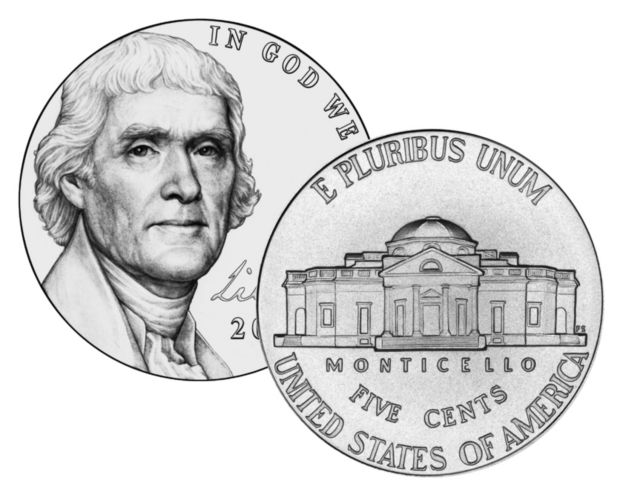Jefferson and American Money
Reading Level: Middle School
Look at a nickel. Who—and what—do you see? On one side is Thomas Jefferson, and on the other side is Monticello, his home. The Jefferson nickel was introduced in 1938. Jefferson was featured on the coin because he was our third president. But another reason he’s on the nickel is because he helped create the money system used in the United States.
After the American Revolution, the thirteen colonies were very protective of their liberties. That included regulating their own money systems. Coins were used from Portugal, Spain, and England. Each colony decided the value of the coins, which constantly changed. Some even began minting (making) their own coins. This caused confusion for buyers and sellers. The new government of the United States realized it had to create one system to make trade easier between the states and the rest of the world. But who would regulate the money? What money system would be used? How would coins be minted?
Thomas Jefferson was involved in these arguments. A silver dollar, based on the Spanish dollar was already in use in the colonies. Jefferson felt that a decimal system (a system based on the number ten) should be adopted. He proposed that the hundredth part of the dollar be called a cent based on the Latin word for “one hundred.” He proposed that a tenth of a dollar be called a dime based on the Latin word for “one tenth.”
In April 1784, Jefferson wrote his ideas in “Notes of the Establishment of a Money Unit and a Coinage for the United States.” He submitted his ideas to the government. After much debate, Jefferson’s decimal system was adopted. It is still used today.



